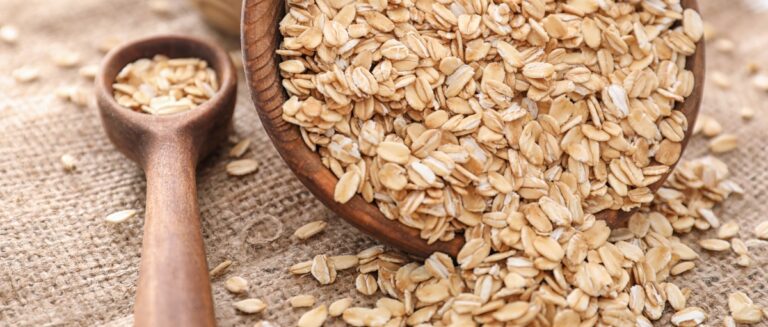Did you know that in certain parts of the world, people regularly live to be 100 or older? These areas, known as “blue zones,” are called such because they were originally marked in blue on a map by the man behind the Blue Zone Diet, Dan Buettner. These regions have captivated researchers and health enthusiasts alike. But here’s the kicker: their secret to longevity might be sitting right on their breakfast plate.
Imagine starting your day with a meal that tastes great and could add years to your life. That’s exactly what people in blue zones do every morning. These regions, scattered across the globe from Okinawa, Japan, to Loma Linda, California, have cracked the code on healthy living, and it all begins with breakfast.
Here’s some food for thought: only about one-third of Americans eat breakfast.
In blue zones, breakfast isn’t just a meal—it’s a cornerstone of a healthy lifestyle. These centenarians start their day with dishes that might surprise you. Think hearty bean soups, mineral-rich miso, and fiber-packed whole grains. A far cry from the sugary cereals or on-the-go breakfast bars many of us are used to, right?
But don’t worry; you don’t need to move to Okinawa or completely overhaul your diet overnight. In this article, we’ll explore the breakfast habits of the world’s longest-living people and show you how to bring a bit of blue zone magic to your own morning routine. Ready to discover how breakfast could be your secret weapon for a longer, healthier life? Let’s dig in!
What Are Blue Zones, and Why Should You Care?
Blue Zones are specific areas around the world where people live measurably longer lives. We’re not talking about a few extra months here and there. In these special pockets of the globe, it’s not uncommon for folks to celebrate their 100th birthday and beyond!
Where in the World Are These Magical Places?
There are five recognized Blue Zones:
- Okinawa, Japan
- Sardinia, Italy
- Nicoya, Costa Rica
- Ikaria, Greece
- Loma Linda, California, USA
Now, you might wonder, “What’s so special about these places?” Well, it’s not just one thing. Blue Zone residents share several lifestyle factors that contribute to their impressive lifespans:
- They move naturally throughout the day.
- They have a sense of purpose.
- They know how to downshift and manage stress.
- They stop eating when they’re 80% full.
- They eat a plant-slant diet.
- They enjoy moderate alcohol intake, usually wine.
- They belong to faith-based communities.
- They put family first.
- They’re part of social circles that support healthy behaviors.
The Blue Zone Breakfast Connection
Here’s where it gets really interesting for us breakfast lovers. Diet plays a crucial role in the Blue Zone lifestyle, and breakfast is no exception. In fact, breakfast is considered the most important meal in many Blue Zones.
Research shows that people in Blue Zones typically eat their largest meal in the morning or early afternoon. This aligns with the old adage, “Eat breakfast like a king, lunch like a prince, and dinner like a pauper.”
But it’s not just about when they eat—what they eat makes a difference. Blue Zone breakfasts are typically:
- Plant-based
- High in fiber
- Rich in healthy fats
- Packed with complex carbohydrates
These nutrient-dense morning meals provide sustained energy, support heart health, and contribute to longevity. They’re a far cry from the sugar-laden, processed breakfasts many of us are used to.
Blue Zone Breakfast Habits Around the World
Now that we understand why Blue Zone breakfasts are so special let’s take a culinary tour worldwide and see what’s on the menu in these longevity hotspots.
Okinawa, Japan: Miso Soup and More
In Okinawa, breakfast is a far cry from sugary cereals or toast. Instead, Okinawans start their day with:
- Miso soup: Rich in probiotics and minerals
- Seasonal vegetables: Often sweet potatoes or bitter melon
- Small portions of fish: For heart-healthy omega-3s
- Green tea: Packed with antioxidants
This nutrient-dense breakfast is low in calories but high in satisfaction, helping Okinawans maintain a healthy weight and start their day right.
Ikaria, Greece: The Power of Goat’s Milk and Honey
On the Greek island of Ikaria, breakfast is simple yet nutritious:
- Goat’s milk yogurt: Higher in protein and easier to digest than cow’s milk.
- Local honey: Rich in antioxidants and natural enzymes.
- Nuts: For healthy fats and protein.
- Seasonal fruits: Providing essential vitamins and fiber.
This combination offers a balance of protein, healthy fats, and natural sugars to fuel the body for the day ahead.
Sardinia, Italy: Sourdough and Minestrone
Sardinians have a unique approach to breakfast:
- Sourdough bread: Easier to digest and lower on the glycemic index than regular bread.
- Sheep’s milk cheese: High in omega-3 fatty acids.
- Fennel tea: Aids digestion.
- Leftover minestrone soup: Packed with vegetables and beans.
This hearty morning meal provides sustained energy and a hefty dose of vegetables to start the day.
Nicoya, Costa Rica: Gallo Pinto Rules the Morning
In Nicoya, breakfast is all about “gallo pinto”:
- Rice and beans: A complete protein source.
- Corn tortillas: Providing essential B vitamins.
- Eggs: For additional protein (usually from free-range chickens).
- Fresh tropical fruits: Offering a variety of vitamins and antioxidants.
This protein-rich breakfast keeps Nicoyans feeling full and energized throughout the morning.
Loma Linda, California: Plant-Based Protein Powerhouse
In this Californian Blue Zone, breakfast often looks like this:
- Whole grain cereals: Often homemade granola or oatmeal.
- Nuts and seeds: For healthy fats and protein.
- Plant-based milk: Such as almond or soy milk.
- Fresh or dried fruits: Adding natural sweetness and fiber
This breakfast aligns with the Seventh-day Adventist tradition of plant-based eating, which is associated with lower rates of heart disease and certain cancers.
The Nutritional Powerhouse of Blue Zone Breakfasts
Now that we’ve taken a world tour of Blue Zone breakfasts, let’s explore why these morning meals pack such a healthy punch.
- High in Fiber: Blue Zone breakfasts are often rich in whole grains, fruits, and vegetables, providing plenty of fiber. This aids digestion, helps maintain a healthy weight, and may lower the risk of heart disease and diabetes.
- Plant-Based Protein: Whether it’s beans in Costa Rica or tofu in Okinawa, Blue Zone breakfasts often feature plant-based proteins. These are lower in saturated fat than animal proteins and may reduce the risk of heart disease.
- Healthy Fats: Nuts, seeds, and olive oil are common in Blue Zone breakfasts, providing heart-healthy unsaturated fats.
- Complex Carbohydrates: Blue Zone breakfasts favor complex carbs like whole grains and beans over simple sugars, providing steady energy throughout the morning.
- Antioxidant-Rich: From green tea in Okinawa to fresh fruits in Nicoya, Blue Zone breakfasts contain antioxidants that fight inflammation and may protect against chronic diseases.
Blue Zone Breakfasts vs. Typical American Breakfasts
Let’s face it: the standard American breakfast looks quite different from what we’ve seen in Blue Zones. Here’s a quick comparison:
Blue Zone Breakfast
- Plant-based
- High in fiber
- Complex carbohydrates
- Healthy fats from nuts and seeds
- Minimal processing
- Moderate portions
Standard American Breakfast
- Often meat-heavy (bacon, sausage)
- Often low in fiber
- Simple carbohydrates (white bread, sugary cereals)
- Often high in saturated fats
- Highly processed foods are common
- Often large portions
The stark differences may contribute to the disparity in health outcomes between Blue Zone residents and the average American.
Bringing Blue Zone Breakfasts to Your Table
Don’t worry – you don’t need to overhaul your breakfast overnight completely. Here are some simple ways to start incorporating Blue Zone breakfast principles into your morning routine:
- Start Small: Begin by adding a serving of fruit or a handful of nuts to your usual breakfast.
- Experiment with Plant-Based Proteins: Try swapping your usual eggs or bacon for a bean-based dish once a week.
- Embrace Whole Grains: Switch from white bread to whole grain, or try oatmeal topped with nuts and berries.
- Think Savory: Don’t be afraid to have soup or leftovers for breakfast—it’s common in many Blue Zones!
- Hydrate Wisely: Replace sugary juices or sodas with water, tea, or coffee (without added sugar).
- Prep Ahead: Many Blue Zone breakfasts can be prepared the night before, making mornings easier.
7-Day Blue Zone-Inspired Breakfast Meal Plan
Ready to give it a try? Here’s a week’s worth of Blue Zone-inspired breakfasts to get you started:
- Monday: Oatmeal with almonds, berries, and a drizzle of honey.
- Tuesday: Whole grain toast with mashed avocado and a sprinkle of seeds.
- Wednesday: Greek yogurt with walnuts and sliced peaches.
- Thursday: Vegetable and bean soup (try making extra for dinner the night before!).
- Friday: Whole grain cereal with plant-based milk and sliced banana.
- Saturday: Corn tortilla with black beans, salsa, and a small side of tropical fruit.
- Sunday: Whole grain pancakes topped with almond butter and berries.
Remember, the key is consistency, not perfection. Even small changes can add up to big health benefits over time.
Your Passport to Longevity: One Breakfast at a Time
We’ve traveled the world exploring the breakfast habits of the longest-living people on Earth. From the miso soups of Okinawa to the Gallo pinto of Costa Rica, we’ve discovered that these centenarians start their days with delicious meals packed with nutrients that support long-term health.
But remember, longevity isn’t just about what you eat for breakfast. It’s about creating a lifestyle that nourishes your body, mind, and spirit. Blue Zone breakfasts are just one piece of the puzzle—albeit important.
So, why give it a try?
Tomorrow morning, take a page from the Blue Zone playbook and swap out your usual breakfast for something inspired by these longevity hotspots. Your taste buds—and your body—might just thank you for it.
Who knows? That simple change could be your first step towards a longer, healthier, and more vibrant life. After all, in the Blue Zones, age is just a number—and breakfast is just the beginning of a beautiful day.
Sources
FoodNavigator-USA. (2011). Only a third of Americans eat breakfast daily, Kellogg’s survey finds. FoodNavigator-USA. https://www.foodnavigator-usa.com/Article/2011/06/28/Only-a-third-of-Americans-eat-breakfast-daily-Kellogg-s-survey-finds











